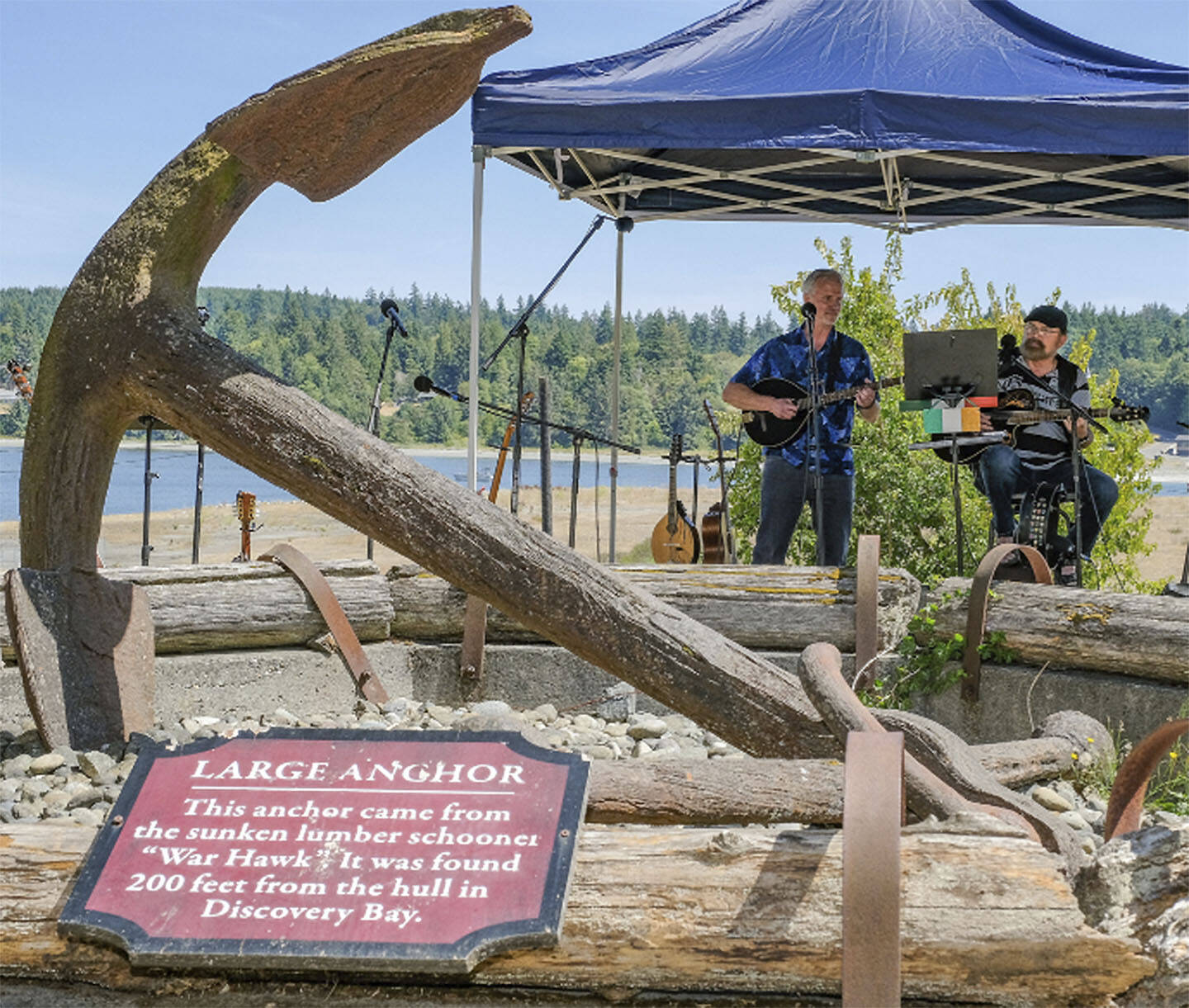The issue of “what shall we do with a drunken sailor” was pretty much settled in 1951 with the enactment of the Uniform Code of Military Justice, but it’s the one sea shanty most people know.
It was sung at the Port Gamble Maritime Music Festival Aug. 12, but many other sea shanties were.
The festival, in its 18th year, is a production of Maritime Folknet, a nonprofit dedicated to preserving maritime culture and history. Davide Kessler, its secretary, said the group’s purpose was to not only preserve the musical history of those who work on, and live, near the sea, but to perpetuate those traditions, and enhance their relevance in the modern world.
To that end, the festival includes a songwriting “competition to encourage more songs to be written about maritime life in the Northwest, past and present,” he said.
Kessler said the festival was expected to attract around 200 attendees. He said the group’s budget was about $10,000 annually (supplied through grants, ticketed events, donations, and other sources) and that Folknet was used to losing money on the free Maritime festival, but it was still a worthwhile activity.
The show started at noon. Acts began with emcee introductions and songs performed by club president Dan Roberts (also of The Whateverly Brothers), and treasurer Lynn Applegate. They were immediately followed by Blue Heron Canoe, a native group that performed songs, dances and even some comedy originating from the experiences of the Salish peoples. Kitsap County was represented by Bob Nash and Todd Erler of Rye and Barley, who specialize in “ traditional Irish tunes, sea chanties and pub pleasing songs.” SeaStar and Shanghaied on the Willamette performed as well.
So, what is a shanty? Chris Glanister, founder of the festival, and Roberts said a shanty is actually a useful tool for coordinating the efforts of groups of workers, to rhythmically haul, hoist, handle or harpoon any multi-person task. The cadence and pace of the songs guide the execution of the tasks and different songs suit different tasks. They clarified that cultures from all over the world have had similar working songs.



